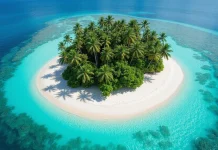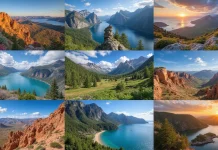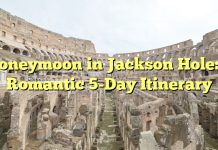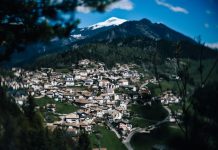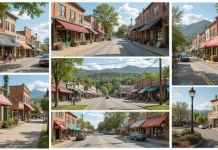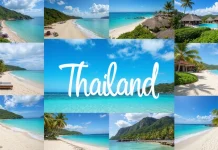Discovering Tallinn's Historical Gems
Old Town: A Journey Through Time
Wander through the cobblestone streets of Tallinn's Old Town and you’re stepping into a world where medieval history is palpable. This UNESCO World Heritage site is renowned for its well-preserved Hanseatic architecture, city walls, and charming alleyways. As you stroll through, you’ll encounter the Town Hall Square, which has been a hub of activity since the Middle Ages.
The Gothic Town Hall
Standing in the heart of the square, the Gothic Town Hall is a testament to the grandeur of medieval architecture. Constructed in the early 1400s, it is one of the oldest town halls in Northern Europe. Climb up the tower for a breathtaking panoramic view of Tallinn that captures both its history and its modernity.
Alexander Nevsky Cathedral
A short walk from the square, the majestic Alexander Nevsky Cathedral captures the spirit of the Russian Orthodoxy in Estonia. Built in the late 19th century, its stunning onion domes and intricate mosaics stand out against the skyline. The melodious church bells and aromatic incense inside create a serene atmosphere, perfect for reflection.
Toompea Castle: Where Past Meets Present
Venture up to Toompea Hill to explore Toompea Castle, officially the seat of the Estonian Parliament. This fortress has witnessed centuries of political change and military campaigns. The pink façade of the present parliament building adds a touch of modern charm to the historic stronghold.
Patkuli Viewing Platform
For a spectacular view of the city, head to the Patkuli Viewing Platform. From here, you can see the spires, bell towers, and red-tiled roofs that make Tallinn's skyline distinctive. The view extends all the way to the Gulf of Finland, offering a glimpse of the city's maritime significance.
Engaging with Estonia's Artistic Heritage
Kumu Art Museum
The Kumu Art Museum, situated in the Kadriorg district, is a masterpiece of contemporary architecture housing a vast collection of Estonian art. Spanning from the 18th century to modern times, Kumu's exhibitions dynamically portray the country's colorful history through various artistic expressions.
Exhibition Highlights
Among the permanent exhibitions, you'll find works from the Estonian Golden Age painting period, socialist realism from the Soviet era, and modern contemporary art. Temporary exhibitions regularly rotate, offering fresh perspectives and international collaborations.
Kadriorg Palace and Park
Designed by Italian architect Niccolo Michetti, Kadriorg Palace is an elegant example of Baroque architecture, built for Catherine I of Russia by Peter the Great. Today, it hosts a branch of the Art Museum of Estonia, presenting foreign art from Western Europe and Russian paintings.
A Stroll Through Kadriorg Park
The palace is surrounded by the lush Kadriorg Park, a splendid location for a leisurely walk. The manicured landscapes, colorful flower beds, and tranquil swan ponds reflect the grandeur of imperial leisure and the natural beauty of Estonia.
Savoring Estonian Culture and Cuisine
Estonian Gastronomy: Tradition Meets Innovation
Estonian cuisine is a delightful exploration of flavors influenced by its history and geography. Incorporating fresh, seasonal ingredients, traditional dishes are being reimagined with modern twists in Estonia's vibrant culinary scene.
Traditional Meals
Delve into must-try Estonian dishes such as black bread, pickled herring, elk soup, and verivorst (blood sausage). The experience wouldn't be complete without tasting kama, a unique flour mix that is often served as a dessert with sour milk or yogurt.
Fine Dining at its Best
For an exquisite dining experience, visit NOA Chef's Hall, often lauded as the best restaurant in the Baltics. The menu is an innovative reflection of Estonian flavors with an emphasis on locally-sourced ingredients, all set against the backdrop of the beautiful Baltic Sea.
Café Culture
Tallinn's café scene is thriving, offering both locals and visitors cozy spots for relaxation and conversation. Pop into Maiasmokk, the oldest operational café in Estonia, to indulge in traditional Estonian confections and soak in the historic atmosphere.
Exploring Estonia Beyond Tallinn
A Day Trip to Lahemaa National Park
Just an hour's drive from Tallinn, Lahemaa National Park offers a stark contrast to the city's urban vibe with its untouched natural beauty. As Estonia's largest national park, it boasts diverse landscapes ranging from dense forests and serene lakes to rugged coastlines.
Hiking Trails in the Wilderness
The park is intertwined with hiking trails for all skill levels. One popular route is the Viru Bog Trail where wooden boardwalks guide you through a unique bog landscape, letting you experience the magical tranquility of Estonian nature.
The Historic Manors
Nested within the park are several historic manor houses, each with their own story. Visiting Palmse Manor, dating back to the 17th century, gives a glimpse of the aristocratic lifestyle of the past. The beautifully maintained gardens and house interiors offer a peek into historic luxury.
Journey to Tartu: Estonia's Cultural Hub
Estonia's second-largest city, Tartu, is renowned for its vibrant cultural scene and academic atmosphere. Being home to the University of Tartu, one of Northern Europe's oldest and most esteemed universities, this city resonates with youthful energy and intellectual vibrancy.
Tartu Art Museum
Affectionately known as the ‘Leaning House of Tartu' due to its visibly tilted structure, the Tartu Art Museum hosts a range of modern Estonian artworks. It is a site where tradition meets contemporary artistry, inspiring dialogue between the past and present.
The AHHAA Science Center
For a hands-on learning experience, visit the AHHAA Science Center. Here, interactive exhibitions engage all ages, inviting everyone to explore the intriguing world of science and technology in a fun and educational environment.
Immersing in Estonia's Festival Culture
Old Town Days
If your visit coincides with late May, you don’t want to miss the Old Town Days, a festival bringing medieval history to life. The event features vibrant parades, street performances, traditional music, and open-air markets, offering a deep dive into Estonia's historical zest.
Viljandi Folk Music Festival
Held in the picturesque town of Viljandi, this annual July event attracts music lovers from around the globe. The festival presents a diverse array of folk music, from traditional Estonian to international acts, amidst the stunning backdrop of fairytale-like ruins and scenic lake views.
‘Jaanipäev’: Midsummer Celebrations
Celebrating the summer solstice with the locals during Jaanipäev gives insight into Estonia's pagan heritage. Bonfires, folk dances, and singing traditionally punctuate this midsummer festival, symbolizing joy and community connections.
Participating in Traditions
Joining locals in these celebrations, especially in the countryside, allows for an authentic cultural exchange. Building a bonfire, sharing stories, and dancing under the midsummer sky are experiences that resonate with the heart of Estonian traditions.
Navigating Estonia's Folklore and Mythology
National Geographic's Influence: The Kalevipoeg Adventure
The epic of Kalevipoeg is an integral part of Estonian folklore, akin to Finland's Kalevala or ancient Greek myths. The story follows the heroic deeds of Kalevipoeg, the son of Kalev, through his adventures and trials in a narrative rich with mythical beings and moral lessons.
The Legend and Modern Interpretations
Exploring how the legend of Kalevipoeg is interwoven with national identity, you'll find it celebrated through literature, music, and art. Modern interpretations often highlight themes of resilience and the indomitable spirit of the Estonian people.
Tales of the Forest
Forests are sacred in Estonian culture, often depicted in folklore as the homes of spirits and mythical creatures. These tales reflect the profound respect the Estonian people hold for nature, illustrating a worldview where humanity coexists harmoniously with the wilderness.
Exploring Folklore through Storytelling
Visit storytelling events and folklore gatherings to immerse yourself in these ancient narratives, passed down through generations. The oral tradition remains a vital way to preserve and celebrate Estonia's cultural heritage.
Engaging with Estonia’s Tech Innovation
The Digital Society
Estonia's reputation as the ‘most digitally advanced society' is well-earned. Known for innovative achievements like e-Residency and digital governance, Estonia showcases how culture and technology blend seamlessly here.
Experiencing e-Estonia
The e-Estonia Showroom in Tallinn offers insights into the country's digital revolution. Interactive exhibits and presentations detail how Estonia became a trailblazer in cyber solutions and digital infrastructure, inspiring awe with its technological foresight.
Startup Scene
Estonia is also a breeding ground for tech startups, with Tallinn and Tartu emerging as vibrant tech hubs. Companies like Skype and TransferWise (Wise) have their roots here, showing the world the creative potential of Estonian entrepreneurship.
Visiting a Coworking Space
Stop by one of Tallinn's many coworking spaces to experience firsthand the dynamic startup culture. These spaces are buzzing with creativity and innovation, reflecting the forward-thinking spirit that defines Estonia. They’ll leave you with a sense of the collaborative energy driving the nation’s economic future.
By exploring Estonia's cultural tapestry through its cities, cuisine, arts, history, and technological achievements, you gain a deeper appreciation for this innovative and tradition-rich nation. Whether you’re strolling through Tallinn's medieval streets, savoring modern Estonian cuisine, or engaging with the country's digital advancements, Estonia offers a rich array of experiences that will captivate your curiosity and invite you to return.

